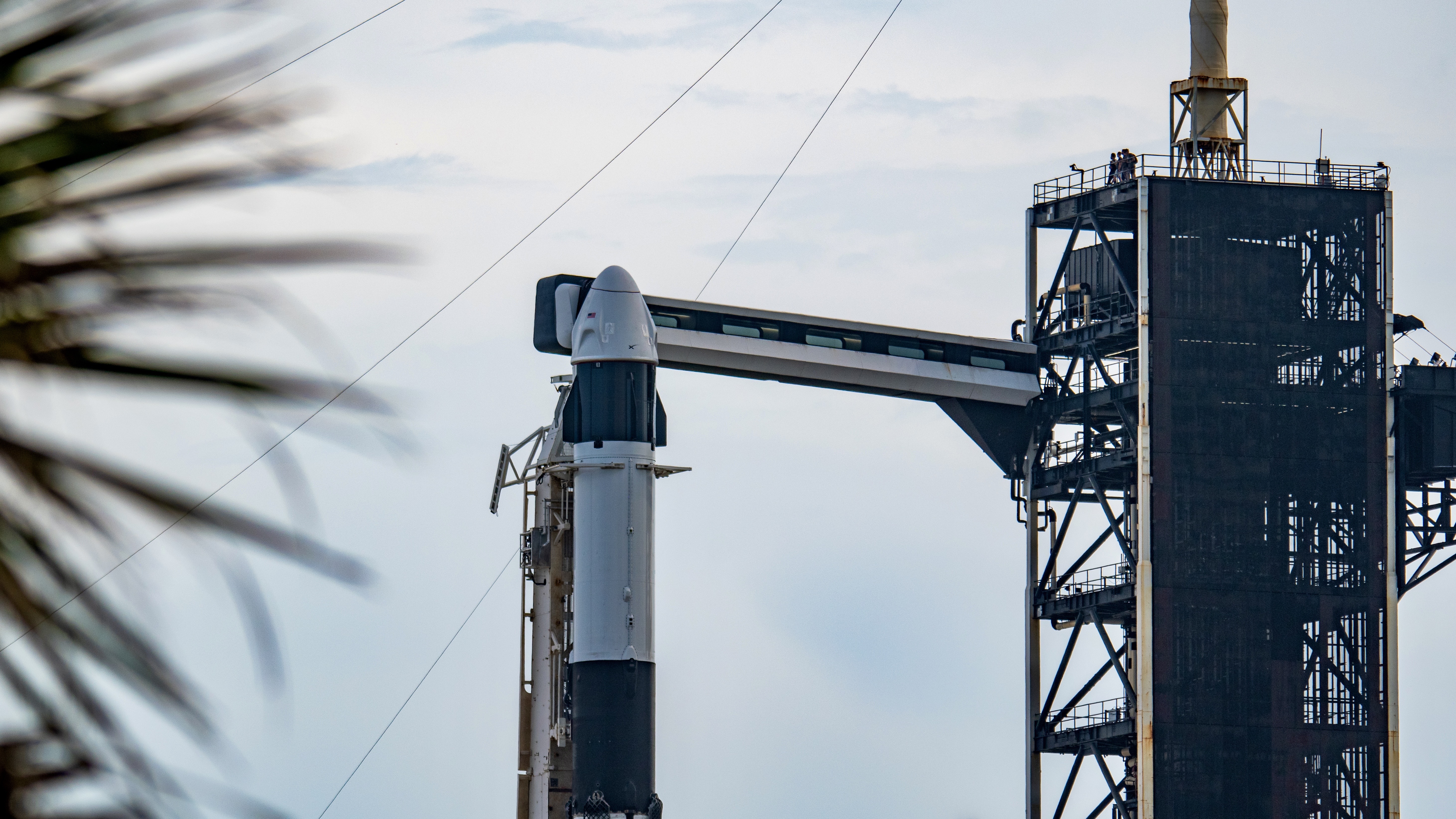Vast Space now aims for 2026 launch of Haven-1 space station after key milestone (photos)
Designing a space station is taking a little longer than Vast expected, but the company is still moving at a breakneck pace.
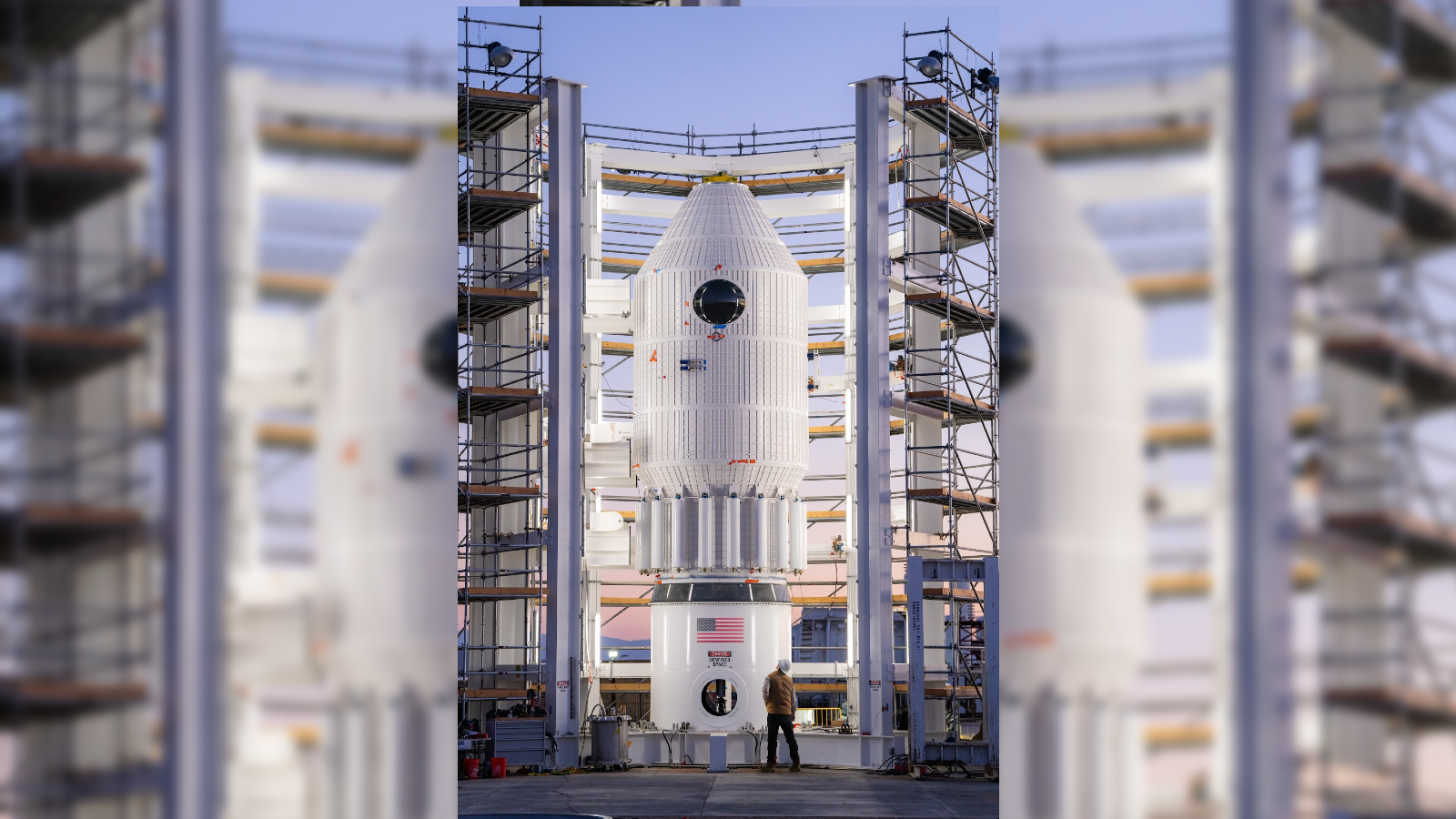
Vast Space is taking big steps toward putting the first commercial space station in orbit.
The California-based startup recently completed a major testing milestone for the qualification vessel of its upcoming Haven-1 station, a benchmark Vast also used to reevaluate the launch date for the company's first flight-ready module.
"With the completion of our primary structure qualification test and a fully assembled team, we now have greater clarity on our build and launch schedule. As a result, we are updating our timeline," Vast said in a statement.
Haven-1 will ride a SpaceX Falcon 9 rocket to low-Earth orbit — a mission that was initially slated for this August. Now, Vast expects Haven-1 to launch no earlier than May 2026.
Even with the delay, it's still an "ambitious timeline," the company said. But Vast remains optimistic: "If all goes as planned, we will have designed, built, and launched the world’s first commercial space station in three years — a pace never before achieved in human spaceflight."
Vast began manufacturing the Haven-1 qualification article at its Long Beach headquarters in July 2024 and transported the module to the company's test stand in Mojave, California, last month. There, the module began a series of campaigns to qualify the module's structural integrity. Those campaigns are ongoing, but one passed recently was a significant hurdle for the module's continued development.
Using dry nitrogen, Vast pressurized the module on the test stand twice — the first for a duration of five hours, and the second for 48 hours. According to the company's data, Haven-1's pressure sensors showed an "indiscernible" leak rate, exceeding the vessel's requirements and falling within compliance for NASA's crew-rated spacecraft qualifications.
Get the Space.com Newsletter
Breaking space news, the latest updates on rocket launches, skywatching events and more!
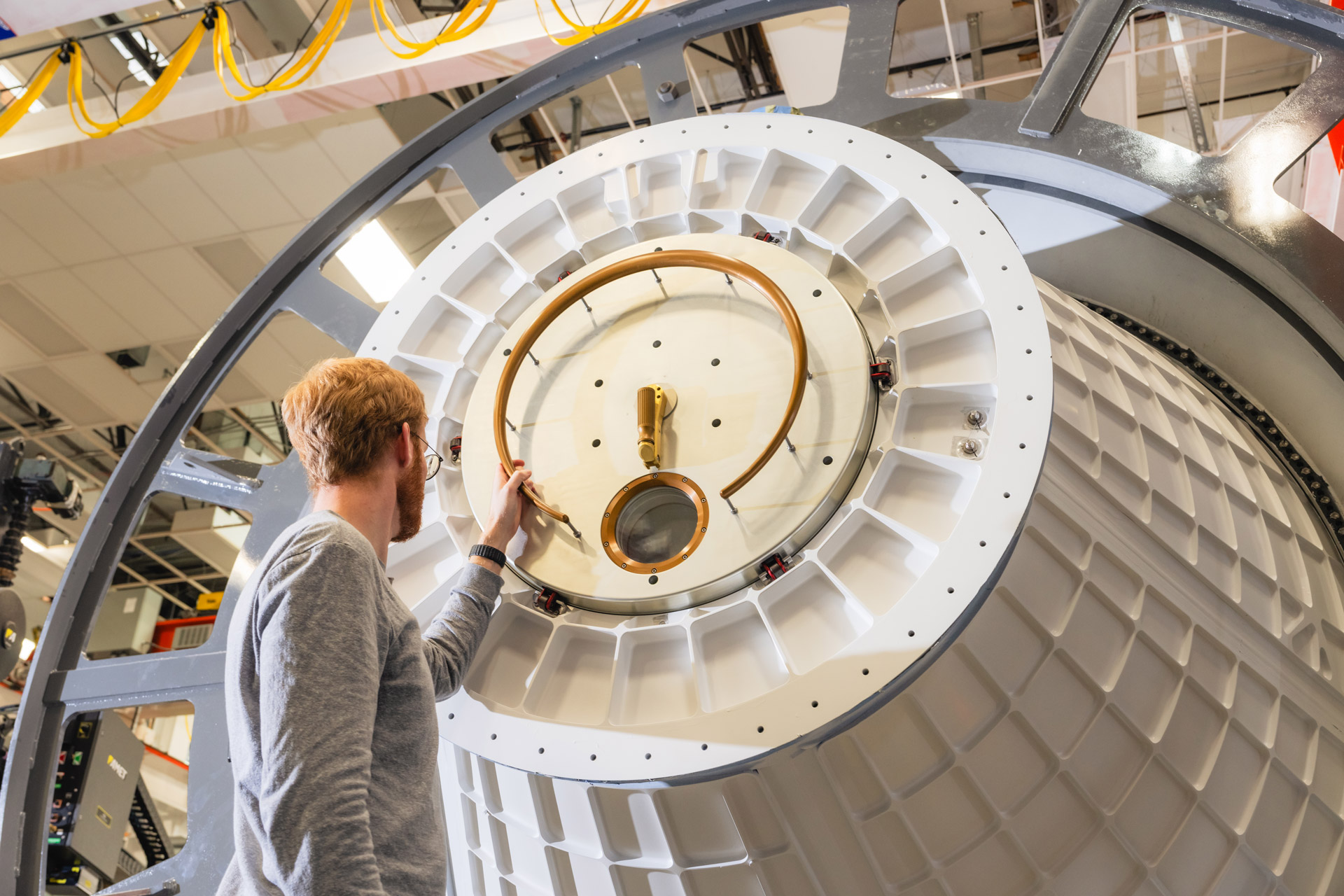
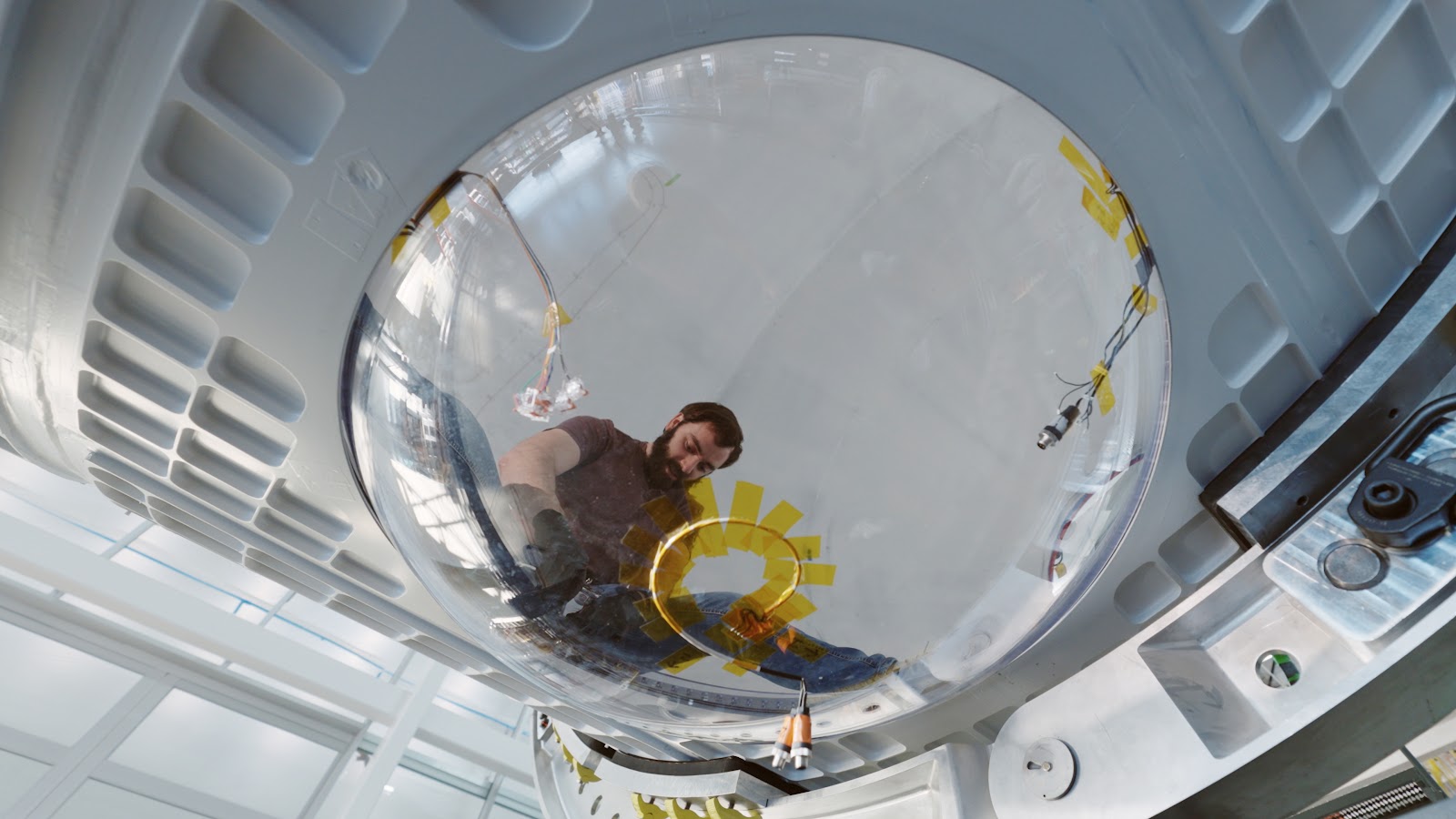
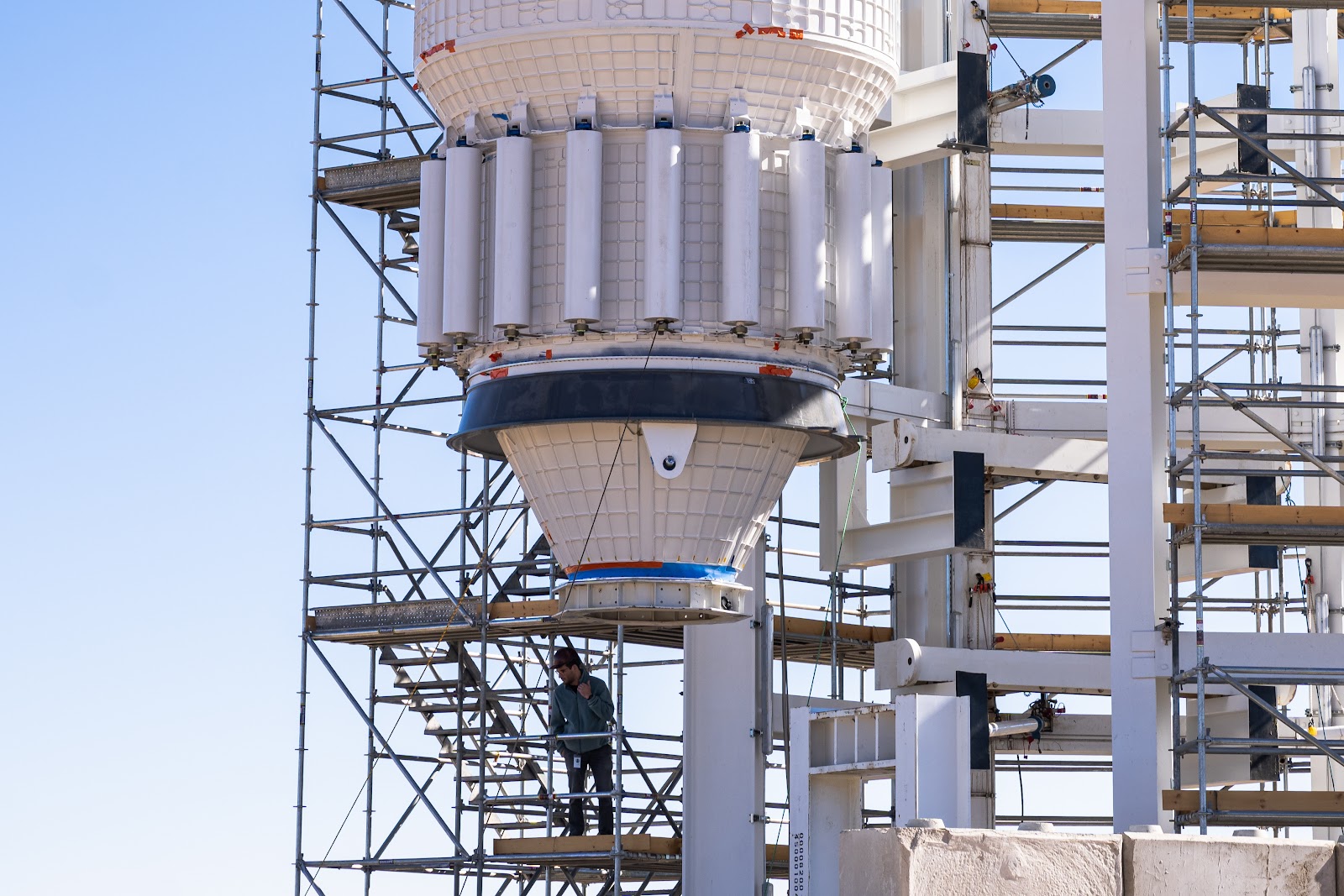
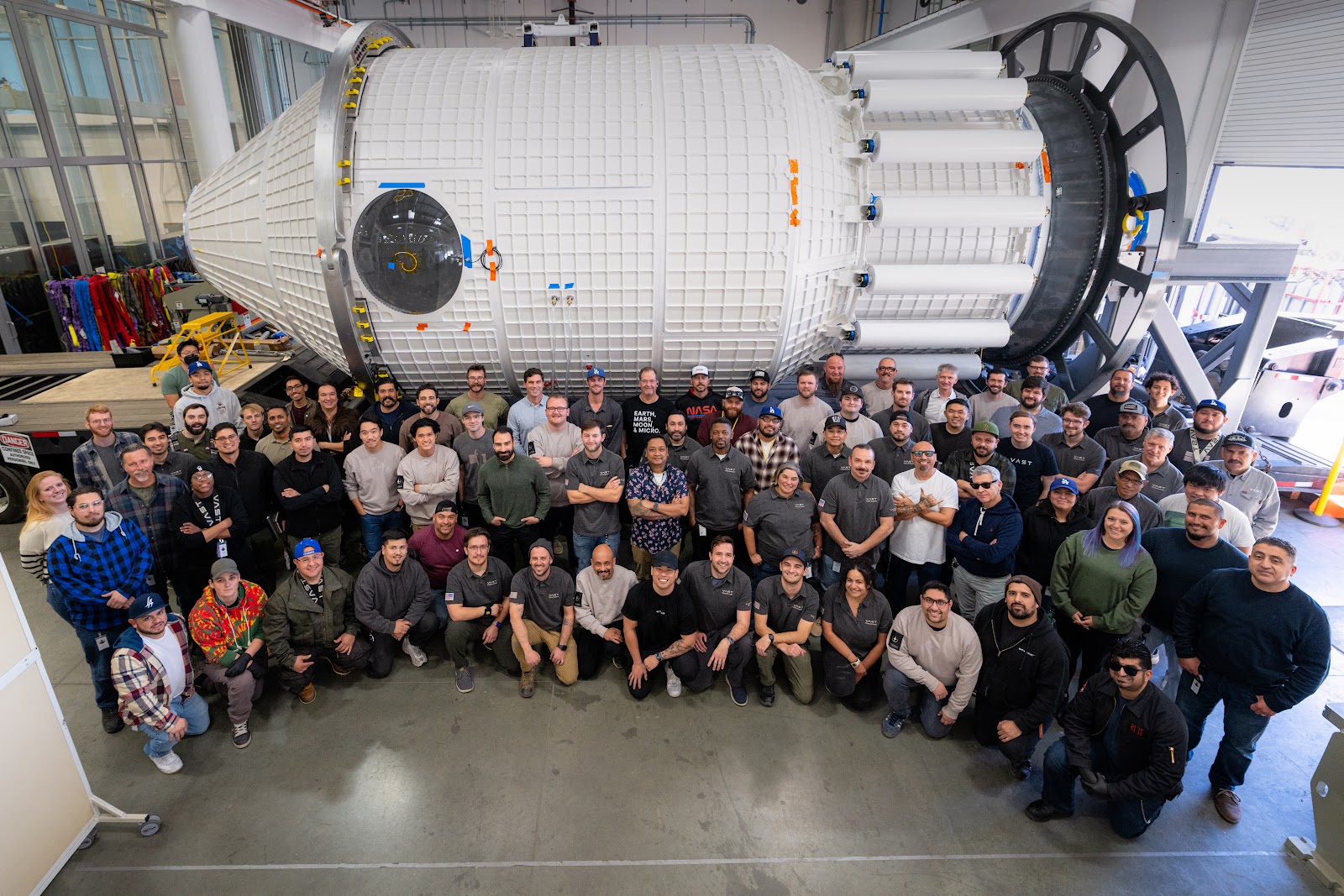
That last bit is important. Vast is hoping to win the bid for NASA's Commercial LEO Destination (CLD) contract in 2026, and wants to put itself ahead of the competition.
With the International Space Station (ISS) approaching retirement at the end of 2030, NASA has been eager for companies to get commercial space stations up and running. Indeed, nearly half a dozen other private contenders have voiced plans to construct their own LEO destinations — namely, Northrop Grumman, Axiom Space, Nanoracks and Sierra Space.
As those companies tread water while they gauge market demand or continue their station developments in the background, Vast says it's on track to get Haven-1 to orbit in record time, and has begun actively seeking out customers and scientists with research they want to fly to space.
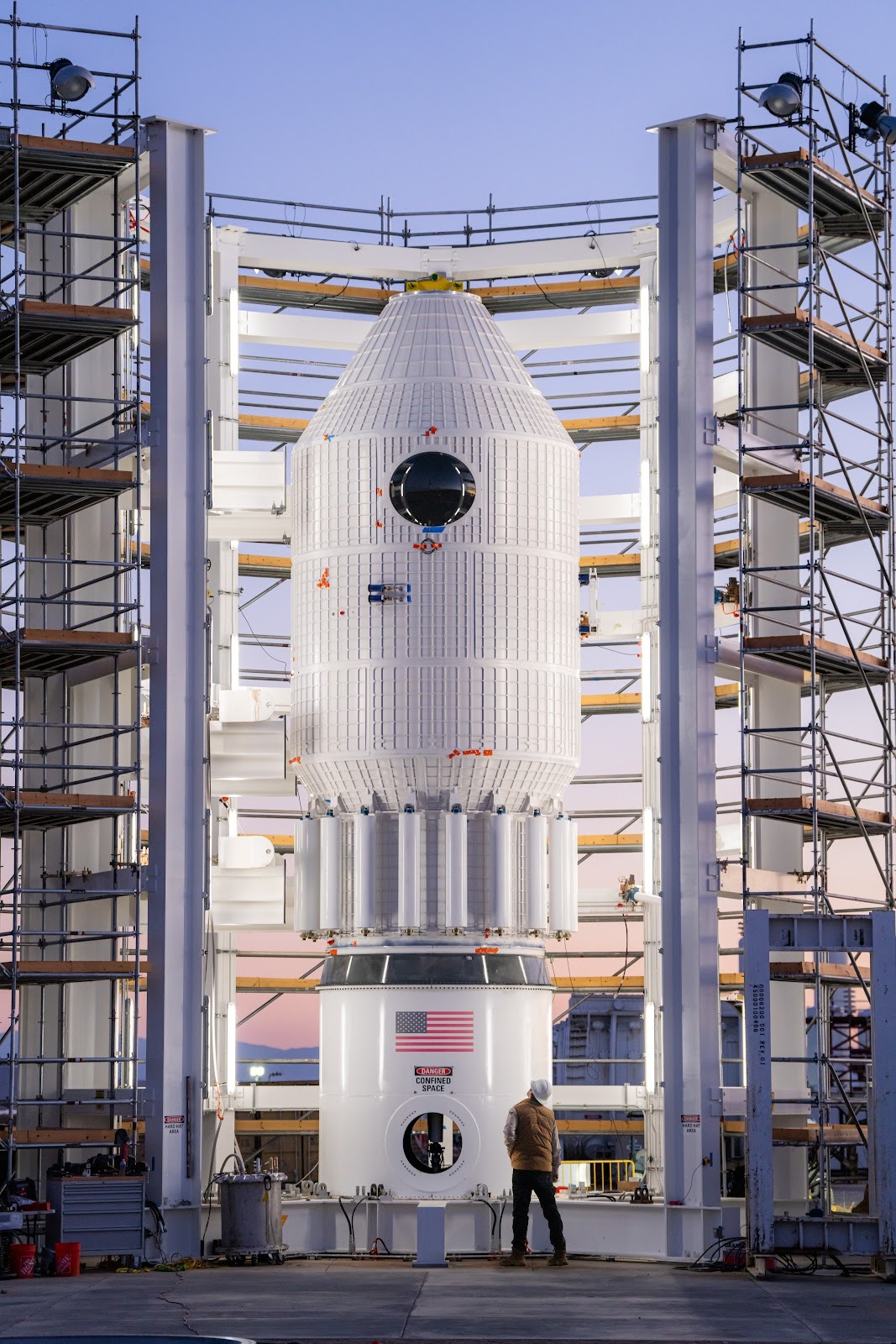
In the weeks ahead, the test module will be submitted to simulated launch pressures using hydraulic actuators on the Mojave test stand, as well as undergo structural load tests while under pressure.
Even as the qualification article began its test campaign at the end of last month, Vast was already manufacturing the Haven-1 flight vehicle — the one going to space. Matching the six-month pace the qualification module took from manufacturing to its tests in Mojave, Vast aims to complete the primary structure for the flight module by July of this year. The company's full timeline, from now through the first crewed mission to Haven-1 is as follows:
| Milestone | Description | Target Date |
|---|---|---|
| Flight Primary Structure | Complete manufacturing and testing of the flight primary structure | July 2025 |
| Integration | Vehicle integration and checkout, including subsystem manufacturing and testing | July 2025 - December 2025 |
| Integrated Vehicle Testing | Environmental test campaign (acoustics, vibration, EMI, TVAC) | Jan 2026 - March 2026 |
| Launch Campaign Start | Pre-launch operations at the launch site | April 2026 - May 2026 |
| Launch | Haven-1 launch | NET May 2026 |
| Automated-Orbit Operations | System commissioning in orbit | May - June 2026 |
| First Crewed Mission | First crewed mission | NET End of June 2026 |
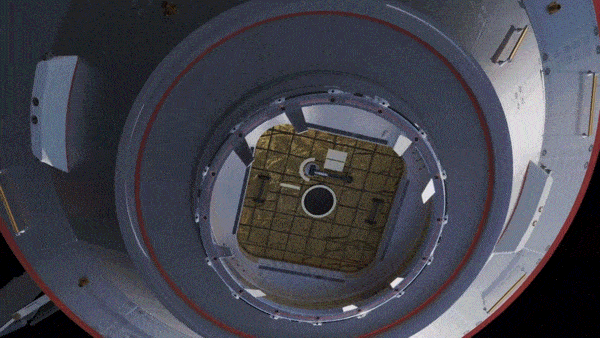
Once Haven-1 is operational in orbit, Vast plans to launch a four-person crew to the outpost aboard a SpaceX Crew Dragon. That mission will last about two weeks, as the astronauts check out the station's systems and habitability.
Looking ahead even further, Vast has already unveiled its plans for Haven-2, a second module design that will dock with Haven-1 to increase the space station's capacity and capabilities. Vast is currently targeting 2028 for the first Haven-2 launch, with plans to to add to the modular station through 2032 to eventually exceed the current capabilities of the ISS.
Join our Space Forums to keep talking space on the latest missions, night sky and more! And if you have a news tip, correction or comment, let us know at: community@space.com.
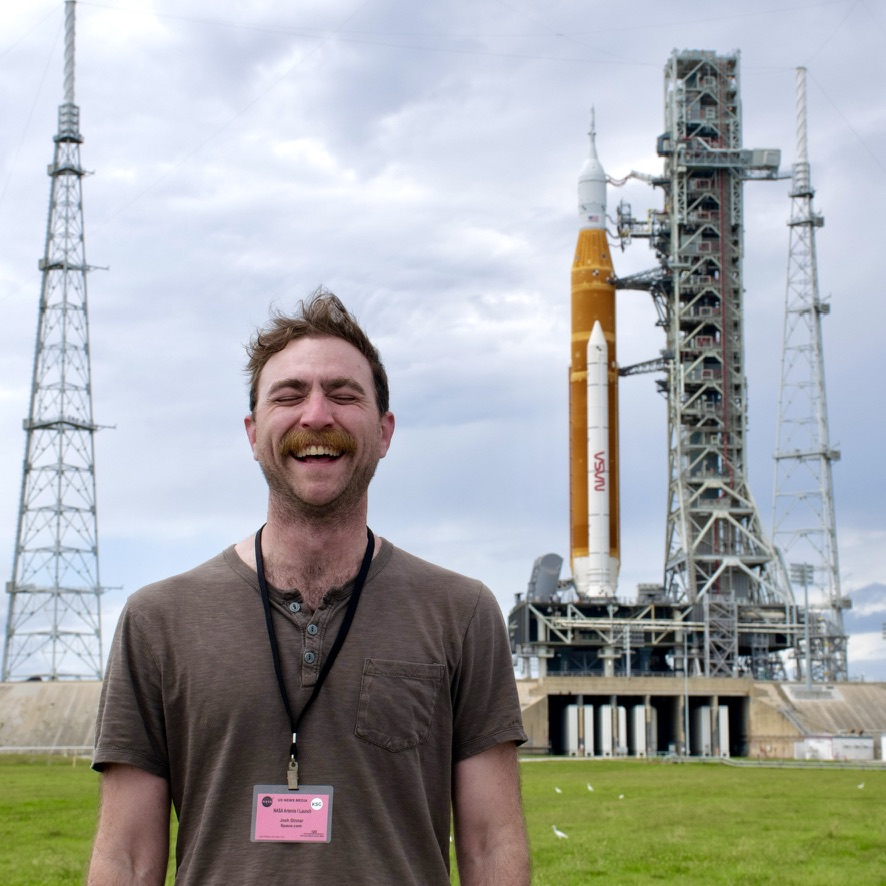
Josh Dinner is the Staff Writer for Spaceflight at Space.com. He is a writer and photographer with a passion for science and space exploration, and has been working the space beat since 2016. Josh has covered the evolution of NASA's commercial spaceflight partnerships and crewed missions from the Space Coast, as well as NASA science missions and more. He also enjoys building 1:144-scale model rockets and human-flown spacecraft. Find some of Josh's launch photography on Instagram and his website, and follow him on X, where he mostly posts in haiku.
-
George² In an individual spacesuit, it's wider than in this pocket orbital "station." I'll skip it until the volume increases by at least 50 times.Reply -
Unclear Engineer https://www.vastspace.com/haven-1Reply
Haven 1 is 4.4 m in diameter, compared to the ISS modules 5.7 m in diameter.
Haven 2 is the same diameter, but longer.
They are designed to be launched by SpaceX Falcon 9 and Falcon Heavy rockets, respectively. -
Atlan0001 Only an artificial gravity station will begin opening the Space Frontier to our expansion. This 0g station and all like it will fail commercially, failing expansionism to the frontier, until artificial gravity stations begin coming online energizing humans toward space. Money is a token of energy. Wealth a measure of energy. And the energy, money, and wealth, will begin in humans and other life in artificial gravity . . . not before, as proven by NASA's, Russia's, and China's, efforts in space for decades! Billions spent on few humans in space and not a dime of profit from humans in space! It will stay that way, 0-energy, 0-profitability, in the sure, certain, constancy of FEW humans in 0g.Reply -
VladOk Postponing the launch of the station into orbit for a whole year - not a month, not two, but a whole year - automatically transfers this company (with no fame or reputation) to the category of "promising", of no interest to the public and investors. I think they will lose at least most of their investors. And this actually means the collapse of the project.Reply
Next year, Starship will go on orbital flights with astronauts, Starships themselves are huge orbital stations and in a configuration for 4 astronauts can stay in orbit for many months.
I think we can safely forget about this project. The company buried itself. -
Unclear Engineer I think the demise of VAST is being greatly overstated by the previous posters.Reply
Considering that nobody is currently planning any artificial gravity space stations, those interested in going into space are just going to have to make do with what they can get. And, I predict there will be plenty of them, for multiple reasons.
The posters who seem to want spinning wheel space stations are, of course, as uninhibited as everybody else from putting their money where their mouths are to produce these designs that they claim are essential.
So, what is stopping them?
If those profits are really there now, with the technology we actually have now, isn't it foolish for them to pass up such great opportunities for themselves as well as mankind? -
Atlan0001 "Nobody is currently planning any artificial gravity space stations"?!Reply
====================
https://en.wikipedia.org/wiki/Above:_Space_Development_Corporation====================
https://www.trafalgar.com/real-word/space-hotel/?gad_source=5&gclid=EAIaIQobChMIyJLbsNG0iwMVskf_AR3Y5RjiEAAYASAAEgKB3PD_BwE&gclsrc=aw.ds====================
https://www.architecturaldigest.com/story/worlds-first-hotel-in-space====================
Nobody?!?! -
Unclear Engineer I would not say that company is planning such a space station. It is seeking a billion dollars to start planning and developing. It currently has no schedule.Reply
"Above: Space Development (previously known as Orbital Assembly), a company that specializes in designing and constructing space stations, says it could have luxury accommodation in space within “60 months” of securing enough funding for the projects (the company says it would need to be upwards of $1 billion). With two space hotels in the works—Voyager Station and a more recently announced Pioneer Station—anyone’s next R&R could take place among the stars."
There are lots of people advertising lots of things - and hoping somebody will "invest" money in their "companies" so that they can have a good time for a while before filing for bankruptcy. If you want to invest, feel free. But, don't blame others for not choosing to invest in these things. The economics look both optimistic and already too expensive.
"As of now, Above hasn’t commented on the price of a ticket to the hotel in space, but comparing it to other proposed public space missions, it will likely come at a steep cost. For example, Virgin Galactic plans to launch ordinary passengers into space at $450,000 per person, per trip. The team at Voyager and Pioneer Station, however, has already assured the public that as space tourism becomes more commonplace, they hope to eventually make a stay affordable for all."
Meanwhile, I would strongly suggest not buying a "condo in space" from a company that doesn't even have a working display unit.
Getting back to realism. I will say that a routinely functional SuperHeavy would seem to be a good basis for launching larger diameter modules for space stations, considering that it is about 30 feet in diameter, compared to 12 feet for Falcon 9, 18 feet for ULA's Vulcan booster , and even 23 feet for Blue Origin's New Glenn booster.
But, 5 years for a company that has no money to having an economically feasible commercial "space hotel" seems like the kind of hype that real estate investors are notorious for. -
Atlan0001 "Getting back to realism," artificial gravity stations, colonies, other industrial, scientific, agricultural, custom facilitations (most especially including life facilitations) near Earth, would be vastly cheaper and vastly bigger . . . and vastly more useful . . . both in the short and long term than Mars either in the short term or the long term!!!!Reply -
Unclear Engineer But, what is the actual advantage of being in LEO space that business people would be willing to pay for?Reply
There needs to be a financial benefit for doing something off-Earth in order to support the costs of doing it that way instead of on-Earth.
That company's hype about "offices" in space seems to be an imaginative extension of the idea of offices in high-rise buildings for the "prestige". But, you can't take your clients out to see a Broadway Show from LEO, or even go out for a walk in Central Park. Not to mention the costs your clients would need to pay for the "taxi" to your office.
The only reason for businesses to be in space is to actually do something there.
There is good reason that "companies" like that don't have any solid plans to actually put hardware into orbit on a specific schedule. It is hard enough to produce a commercially viable successor to the ISS that caters to the scientific and defense interests, without including the amenities for Ma and Pa Kettle to go there for vacation. Even the trip up and back would not be like getting on an airplane to cross the country - it would take training and a health screening just to be allowed to be launched - and probably a personal space suit - maybe even a personally fitted flight seat.
So, the idea that VAST should scrap its existing plans and go for an artificial gravity design at this point just doesn't seem to acknowledge the realities of the current situation.
If that doesn't sit well with the armchair experts who are hoping to get an economy class ticket to LEO and a reduced price rate on a space station room if they stay an extra 3 days, then those folks should put up the $1billion and hope things work out for them. -
Unclear Engineer The current efforts in LEO are mainly focused on understanding the effects of "zero" gravity, both on human physiology and physical processes that might have some industrial applications. So, producing a space station that provides 1G environment is not really that useful in a location that can rotate crew frequently enough to deal with the physiological problems.Reply
But, one of the reasons for studying zero G physiological effects on humans is the desire to send humans on multi-year missions to far away destinations in space.
So, unless we find medical means to keep astronauts physically fit in zero G environments for years at at time, I think we will eventually get around to developing long-mission space craft that have some sort of gravity simulation - probably rotational.
And, to do that, I expect we will need to deploy similar craft into LEO for development and study. That will probably be the real driver for developing 1G space habitats, not space tourism. In fact, for short duration "vacations", I would expect the "tourists" to want zero G for the experience, rather than trying to avoid it.
But, it would not surprise me if we eventually have interplanetary vehicles that look like the spinning space stations of our fantasies.
Being able to accelerate and decelerate those wheel shaped vehicles will probably require some propulsion systems that are not only more gentle than current rocket technologies, but also much more efficient in their use of propellants. e.g., https://en.wikipedia.org/wiki/Fusion_rocket .
The Pulsar Fusion company is supposed to start test firing such a device this year, but it is too early to know whether they are on a promising development course. https://www.aerospacetestinginternational.com/news/space/pulsar-fusion-to-build-nuclear-fusion-fueled-rocket-engine.html .
On the other hand, that company is talking about 30 day mission durations between Earth and Mars, which, if achieved, would probably make rotating space craft unnecessary for that trip.
At this point, hard to predict what is going to work out and what will become the adopted approach to solving this problem.
